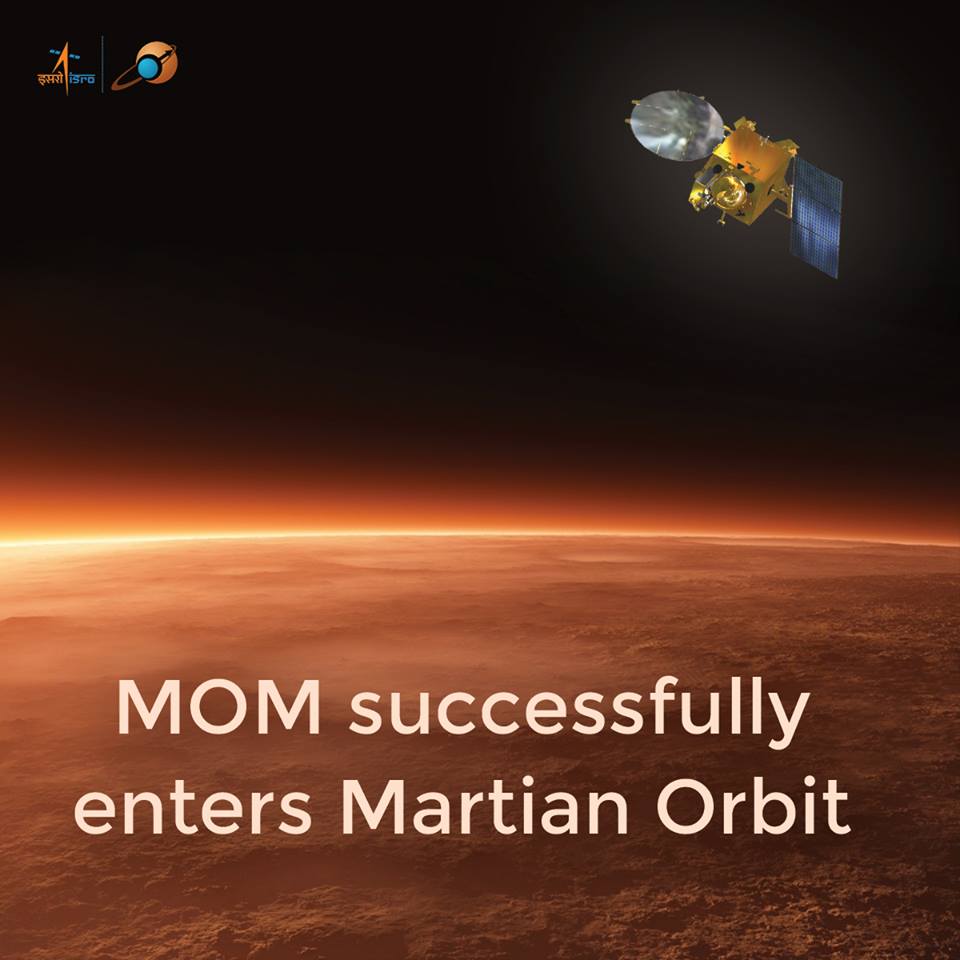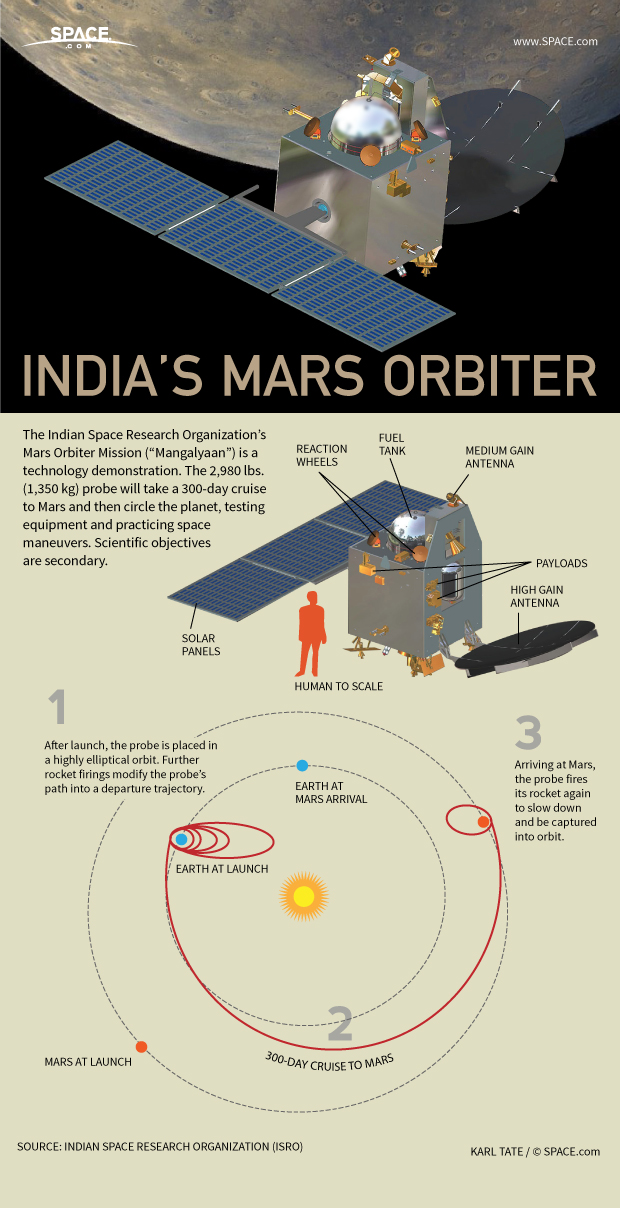
India has joined the Mars club.
India's Mars Orbiter Mission (MOM) probe was captured by the Red Planet's gravity around 10:11 p.m. EDT Tuesday (Sept. 23; 0211 GMT and 7:41 a.m. Indian Standard Time on Wednesday, Sept. 24), making India's space agency just the fourth entity — after the United States, the European Space Agency and the former Soviet Union — to successfully place a spacecraft in Mars orbit.
The MOM probe, which is named Mangalyaan (Sanskrit for "Mars Craft"), executed a 24-minute orbital insertion burn Tuesday night, ending a 10-month space journey that began with the spacecraft's launch on Nov. 5, 2013. [India's First Mars Mission in Pictures (Gallery)]
"What is red, is a planet and is the focus of my orbit?" officials with the Indian Space Research Organisation (ISRO) said via Twitter Tuesday night, in a playful announcement of the orbital-insertion success.

MOM's historic arrival at Mars comes just two days after NASA's MAVEN spacecraft reached the Red Planet, which now hosts five operational orbiters as well as two working surface craft — NASA's Opportunity and Curiosity rovers.
NASA Administrator Charles Bolden congratulated India for its Mars success in a statement the space agency released Wednesday (Sept. 24).
"It was an impressive engineering feat, and we welcome India to the family of nations studying another facet of the Red Planet. We look forward to MOM adding to the knowledge the international community is gathering with the other spacecraft at Mars," Bolden said.
Get the Space.com Newsletter
Breaking space news, the latest updates on rocket launches, skywatching events and more!
"All space exploration expands the frontiers of scientific knowledge and improves life for everyone on Earth," he added. "We commend this significant milestone for India."
The $74 million MOM mission is mainly a technology demonstration, designed to show that India can indeed get a spacecraft to Mars. But the probe also totes a camera and four scientific instruments, which the craft will use to study the planet's surface and atmosphere.
For example, MOM will search for methane, a key target for researchers hunting for signs of life on Mars. Living things produce more than 90 percent of the methane in Earth's atmosphere. And the gas is thought to disappear relatively quickly from Mars' air, meaning that any methane spotted there would have been produced recently.
MOM's mission design calls for a highly elliptical, 77-hour orbit that will bring Mangalyaan as close as 227 miles (365 kilometers) to Mars and take the probe as far away as 49,710 miles (80,000 km) from the planet. MOM's science mission should last between six and 10 months, ISRO officials have said.
MAVEN, whose name is short for Mars Atmosphere and Volatile Evolution, aims to help scientists figure out how and why the Red Planet's climate shifted as dramatically as it did in the past. Billions of years ago, Mars was a warm and wet world capable of supporting microbial life, but today it's a cold and dry place whose surface appears inhospitable.
MAVEN will use its three suites of scientific instruments to study Mars' upper atmosphere, measuring the rates of gas escape into space. Mission team members have said they hope the probe's observations shed light on how the Red Planet lost most of its atmosphere, which was once relatively thick but is now just 1 percent as dense as that of Earth at sea level.
The other three operational spacecraft currently circling the Red Planet are NASA's Mars Odyssey and Mars Reconnaissance Orbiter, along with Europe's Mars Express probe.
Editor's note: This story was updated Wednesday to include NASA Administrator Charles Bolden's statement.
Follow Mike Wall on Twitter @michaeldwall and Google+. Follow us @Spacedotcom, Facebook or Google+. Originally published on Space.com.
Join our Space Forums to keep talking space on the latest missions, night sky and more! And if you have a news tip, correction or comment, let us know at: community@space.com.

Michael Wall is a Senior Space Writer with Space.com and joined the team in 2010. He primarily covers exoplanets, spaceflight and military space, but has been known to dabble in the space art beat. His book about the search for alien life, "Out There," was published on Nov. 13, 2018. Before becoming a science writer, Michael worked as a herpetologist and wildlife biologist. He has a Ph.D. in evolutionary biology from the University of Sydney, Australia, a bachelor's degree from the University of Arizona, and a graduate certificate in science writing from the University of California, Santa Cruz. To find out what his latest project is, you can follow Michael on Twitter.









